Set against the utilitarian backdrop of Shahr-e Qods’ industrial zone—a landscape shaped by repetitive structures, austere functionality, and a general disregard for environmental quality—the Aria Sanat Industrial-Administrative Project by Nobico offers a striking architectural counterpoint. Rather than accept the normative expectations of industrial building design, this project challenges its rigid typology by foregrounding human experience, spatial perception, and aesthetic refinement. It repositions industrial architecture not merely as a container for productivity, but as a medium of interaction, expression, and conceptual clarity.

Reimagining the Factory Typology
At first glance, the building assumes the cubic, rectilinear geometry typical of its industrial neighbors. However, this initial formal simplicity quickly unfolds into a nuanced architectural narrative—driven by a dual-layered volumetric composition. The first layer, painted in bold red and largely opaque, encloses the managerial and semi-private functions. The second layer, rendered in transparent glass and expressive structural elements, contains the public-facing administrative spaces.
This dichotomy of solid vs. transparent, private vs. public, and introverted vs. extroverted is not an oppositional gesture. Rather, it presents a thoughtful dialectic—a relationship that reflects the project’s conceptual core: functional clarity through spatial contrast. The result is a dynamic reading of volume, one that articulates hierarchy, access, and interaction without relying on excessive ornament or complexity.

The Red Staircase: Architectural Anchor and Spatial Catalyst
Central to this interplay is the suspended red staircase, a sculptural insertion that defines both the internal circulation and the architectural character of the project. Far more than a functional element, it acts as a spatial anchor, threading the two volumes together and guiding movement through the building’s levels.
Positioned visibly and dramatically within the transparent layer, the staircase forms a continuous visual axis across multiple floors. Its bold color and suspended form make it a focal point, yet its true value lies in how it choreographs experience—bridging openness and enclosure, order and freedom, and ultimately guiding users between the realms of everyday work and elevated interaction.
Light, Materiality, and Blurred Boundaries
Natural light plays a critical role in shaping the building’s interior atmosphere. Expansive glazed façades and a glass roof invite sunlight deep into the structure, softening the industrial context and creating a dynamic interplay of shadow, reflection, and transparency throughout the day. This generous daylighting strategy not only reduces reliance on artificial lighting, but also dissolves the boundary between interior and exterior, reinforcing the building’s openness and permeability.
Within the interiors, a restrained material palette—glass, exposed concrete, steel, and painted surfaces—emphasizes tactile honesty and structural clarity. Together, these materials animate the space without distraction, allowing the architecture’s proportions and spatial relationships to take center stage.
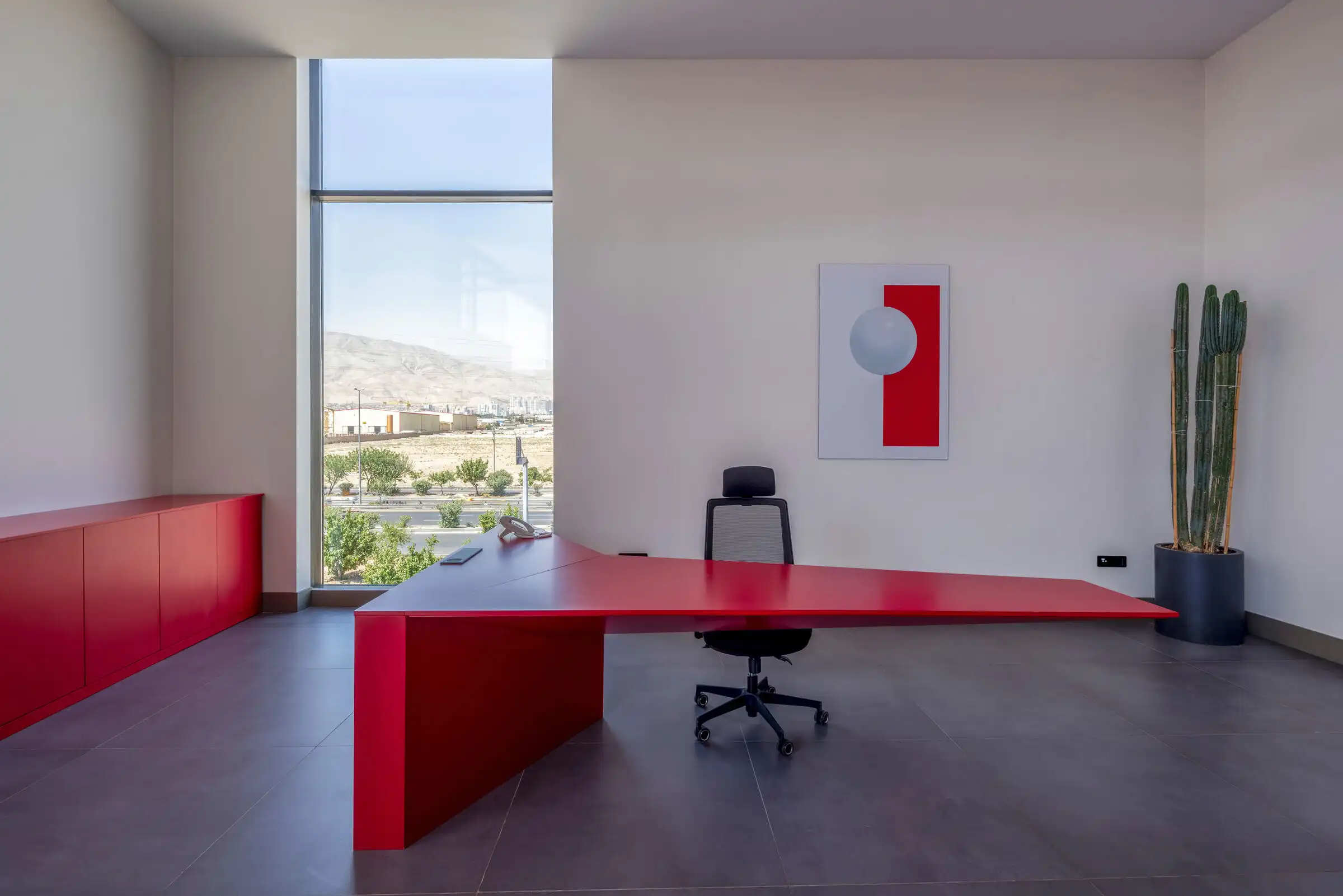
A Functional Continuum: Spatial Programming and User Flow
Rejecting the rigid, compartmentalized nature of traditional industrial facilities, the Aria Sanat project promotes a fluid and interactive spatial organization. The ground floor accommodates public functions and high-frequency circulation, fostering a welcoming entry sequence and reinforcing transparency between visitor and workplace environments. The mezzanine level is designed for standard office operations, while upper floors are reserved for executive activities and meeting areas.
Each level is unified by a strong sense of visual connection and vertical continuity, with the red staircase acting as both conduit and symbol. Circulation extends beyond the enclosed volume to two rooftop terraces, offering spaces for informal gatherings, reflection, and flexible programming—an unexpected amenity in an industrial context.
Connecting Administration and Production
Perhaps the most radical gesture of the project is the long ground-floor window that provides a direct visual connection between the administrative offices and the adjacent industrial shed. This transparent wall isn’t simply about light or openness—it represents a conceptual bridge between technical and managerial teams, highlighting the continuity between intellectual and manual labor. In doing so, it fosters a culture of collaboration and shared vision, challenging the siloed hierarchies often present in industrial organizations.
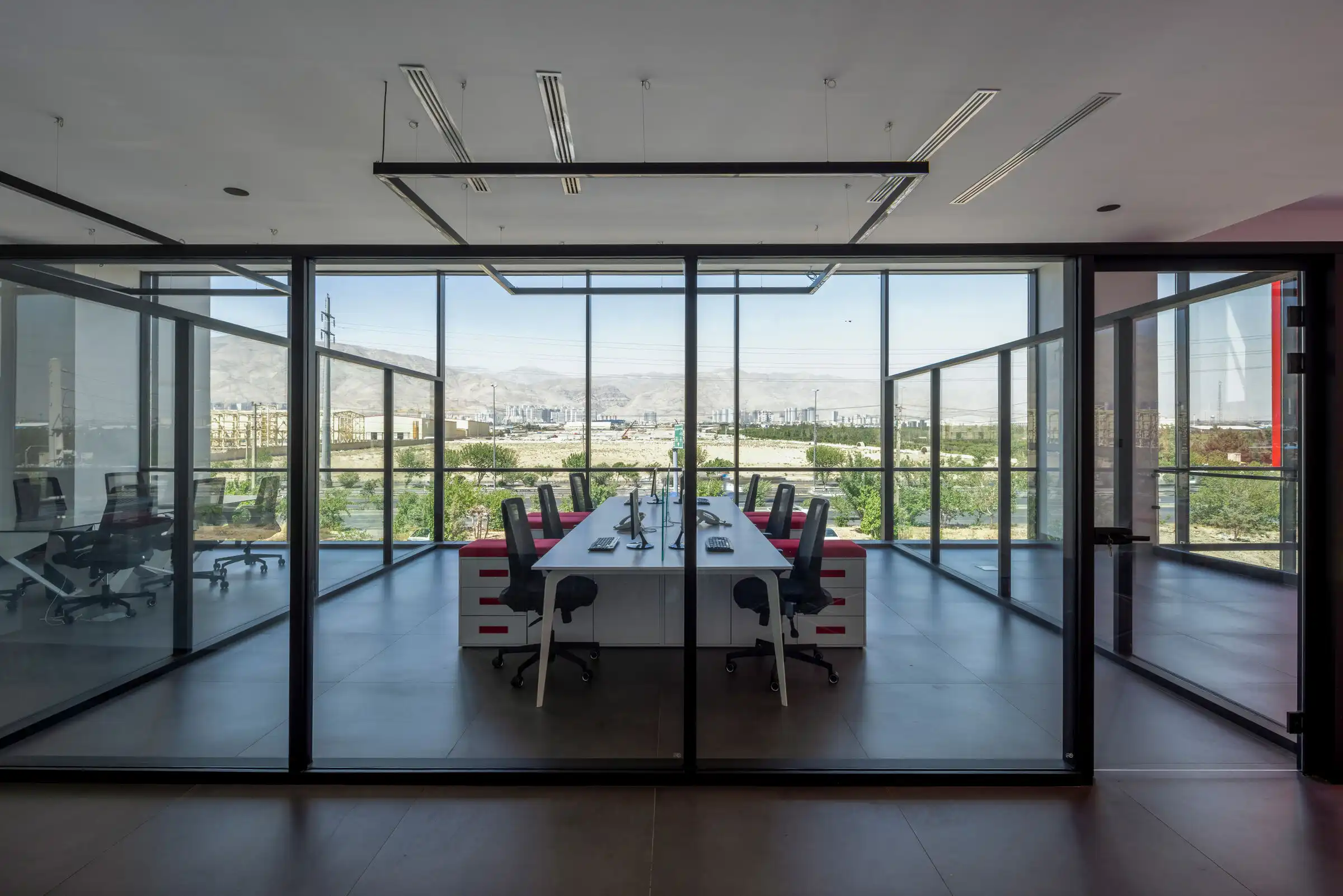
Reframing Industrial Architecture
The Aria Sanat Industrial-Administrative Project demonstrates that industrial buildings can be more than utilitarian shells—they can be culturally resonant, environmentally sensitive, and experientially rich. Through thoughtful articulation of form, material, light, and spatial sequence, Nobico has created a project that elevates the daily experience of work while addressing operational needs with precision.
This is a building where architecture reclaims its agency in a context of repetition and inertia, offering a bold yet grounded reinterpretation of industrial space—one that aligns production with people, place, and possibility.
Photography: NEEL Studio
- Architecture and spatial hierarchy
- Architecture in Tehran Province
- Architecture with red staircase
- Aria Sanat Industrial-Administrative Project
- Daylight in industrial buildings
- Glass and concrete architecture
- Human-Centered Industrial Design
- Industrial architecture as experience
- Industrial architecture Iran
- Industrial office integration
- Innovative factory design
- Iranian architectural firms
- Modern industrial administration
- Nobico Architecture Studio
- Office inside factory concept
- Red staircase architecture
- Reimagining industrial typologies
- Shahr-e Qods architecture
- Tehran contemporary buildings
- Transparent industrial spaces



























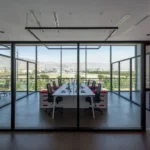

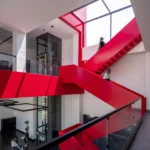
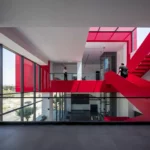

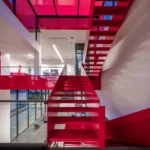




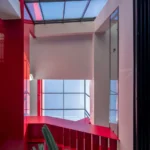


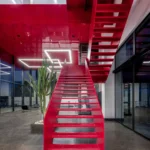
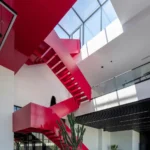
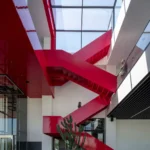













Leave a comment